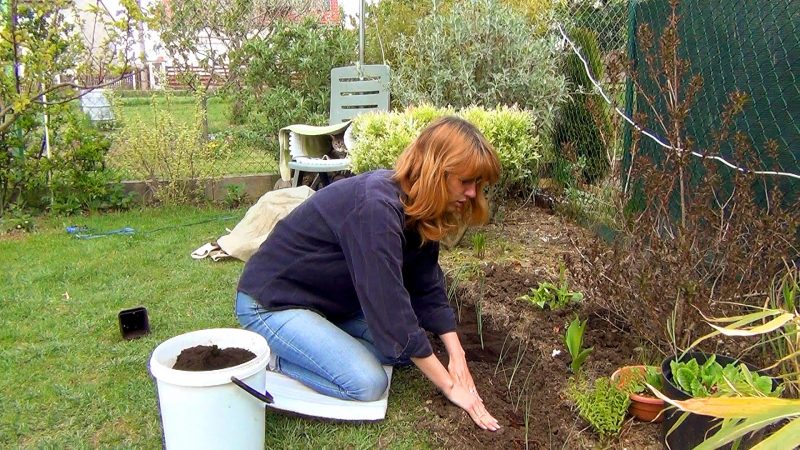Leek is a herbaceous plant that came into our gardens from the regions of Asia Minor. Its cultivation began even in the days of Ancient Egypt, and already in the Middle Ages the plant gained popularity throughout Europe. Currently, the culture is grown in all corners of the world.
Material Content:
Description, types and varieties
Leek is a grassy biennial, the height of which varies from half a meter to a meter. In the first year of development, a powerful, branched rhizome, a false onion, a false stem, covered with a fan of linear-lanceolate leaf plates of green color are formed in the culture. In the next season, a two-meter peduncle develops at the leek in the first half of summer, crowned with an umbrella inflorescence of white or pink flowers. Seeds, almost like onions, ripen in late summer and early September and remain viable for a two-year period.
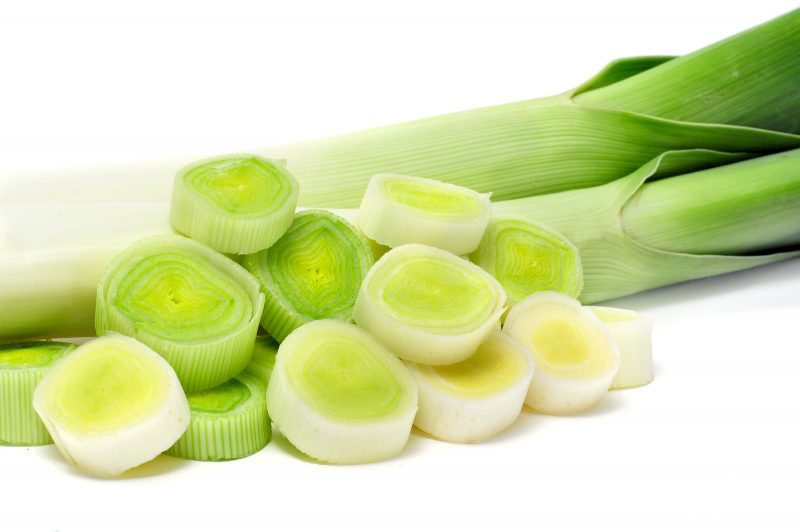
Many varieties of leeks are divided into 3 groups according to the ripening dates:
- Summer - the growing season is 130-150 days, during which legs are formed weighing up to 350 g.
- Autumn - varieties ripen in 5-6 months. The mass of legs in 200 g is inferior to the early varieties, but the quality of the stems is much better.
- Winter - for the ripening of late varieties, the productivity of which is at the level of mid-ripening forms, it takes more than 180 days.Thanks to the dense structure of the legs, winter varieties are best suited for storage.
Summer or early
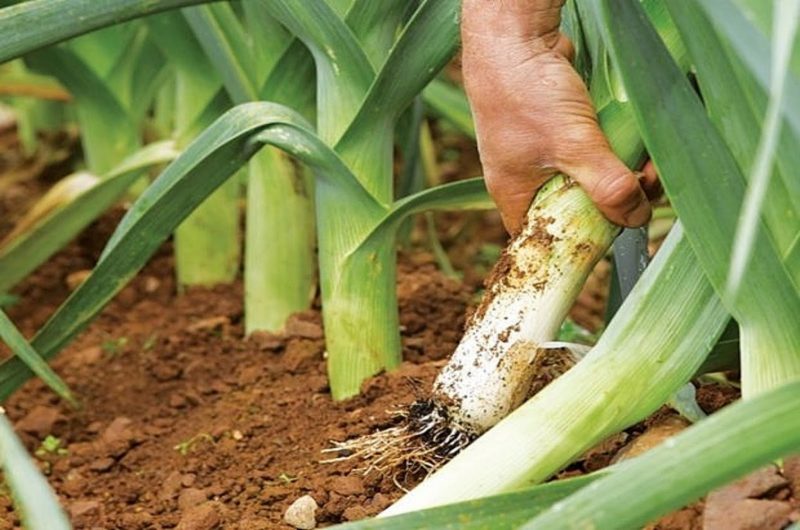
Among the varieties of early ripening stand out:
- "Columbus" - a variety bred by Dutch breeders, grows up to 80 cm, while forming a leg of 20 cm with a weight of 400 g, which does not need to be earthed up for bleaching.
- “Vesta” is a productive variety up to one and a half meters high, forming, under the condition of systematic hilling, the bleached part up to 30 cm with a weight of 350 g.
Autumn or mid-season

Popular varieties of the group:
- "Jolant" is a variety resistant to fungal infections with a leg up to 35 cm.
- "Tango" is a cold-resistant variety with high yields.
Winter or late
The best varieties of late ripening are considered productive leeks "Karantansky" and drought-and frost-resistant "Elephant".
Growing leeks through seedlings

Cultivation of the crop through sowing of seed material directly into the open ground is carried out only in the southern regions, while the seedling method is used in other climatic zones.
When to Sow Leek Seedlings
The timing of sowing seeds can vary depending on the chosen place:
- the end of winter, the beginning of spring is suitable for sowing seeds at home;
- mid-April - for planting in the greenhouse;
- end of April - when cultivating seedlings in a greenhouse on ridges.
Rules for sowing at home
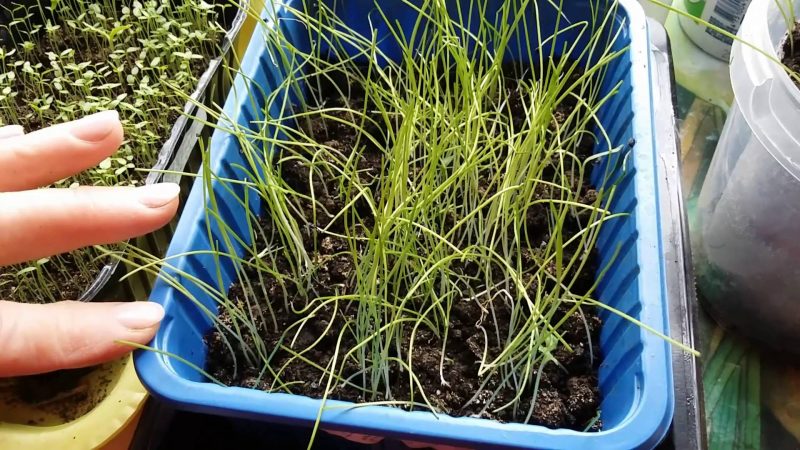
Seeds are sown as follows:
- A container is taken, the depth of which should be at least 10 cm, and disinfected with a strong solution of manganese.
- Seeds are kept in hot water (45 ° C) for 2 hours, after which they are washed with cold and dried well.
- The container is filled with a light substrate, on the surface of which seeds are distributed.
- Seed is crushed by a 0.5 cm layer of sand.
- Crops are covered with a film and kept at temperature values in the range of 22-25 ° C until germination.
Leek seedling care
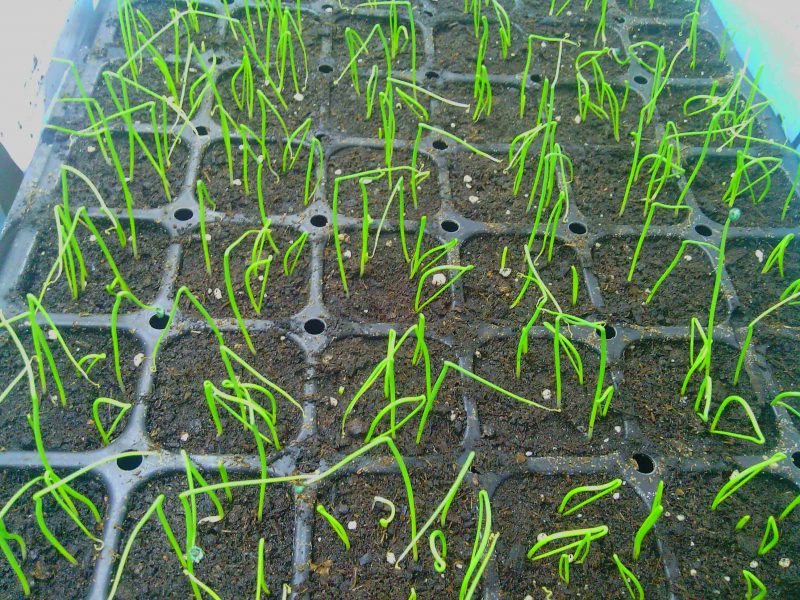
Sown leek for seedlings gives the first seedlings in 10 days, after which:
- Shelter is removed from the crops.
- Shoots are systematically moistened with warm water using a spray gun.
- The tank moves to a well-lit place without direct sunlight.
- The temperature drops in the daytime to 18-20 ° C, and at night to 12-14 ° C.
- With thickened crops, seedlings erupt.
- When the seedlings get stronger, seedlings are fed with complex mineral fertilizers.
Planting leek seedlings in open ground
In order for the selected varieties to demonstrate their full potential, it is necessary to seriously approach the planting of seedlings in open ground.
Site selection and soil preparation
For the cultivation of leeks, a sunny area with a loose, fertile soil of neutral reaction is selected.
Soil preparation is carried out in two stages:
- In autumn, the site is dug up with the simultaneous introduction of 30 g of azofoska, 10 g of urea and 5 kg of compost per 1 m2.
- With the advent of spring, humus is scattered across the territory with a norm of 3 kg per 1 m2.
Then you can plant leek
The optimal precursors for the plant are legumes (soy, beans, peas), nightshade (tomatoes, potatoes) and cruciferous (cabbage, radish) crops. If onions were grown on the site, regardless of species, then the territory will not be suitable for planting leeks for another 3 years.
Dates of planting leeks
Planting leeks is carried out in the evening or on a cloudy day in the first half of May, when the seedlings reach two months of age.
Planting technology

After quenching seedlings by moving seedlings to fresh air in the daytime, you can begin to plant it:
- On the prepared site, grooves are made with a depth of 10-15 cm with row spacings from 20 to 30 cm.
- Seedlings, with roots shortened by аются, are lowered into grooves while maintaining a distance between specimens of 10 to 25 cm, depending on the size of the variety.
- Furrows are not completely covered with earth.
- The soil is compacted with abundant watering.
The nuances of sowing in the winter
Regardless of the climatic features of the region, it is possible to sow seeds in open ground before winter.
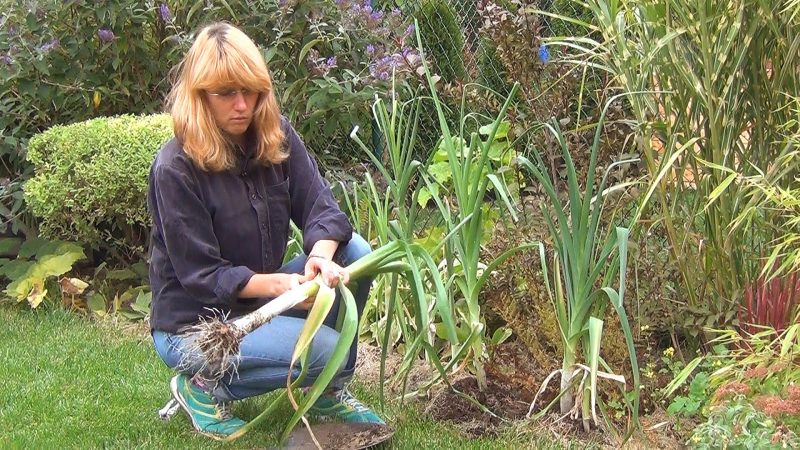
When choosing this method:
- In summer, the site is dug up and fertilized.
- After the first frosts, grooves are prepared, in which seeds are sown with an interval of 8-15 cm.
- Crops are mulched with peat, and then covered with snow, the melting of which will well replenish the soil moisture reserves necessary for the full growth of the crop.
Attention! When winter crops are sown, it is necessary to carefully monitor the weather so as not to rush with the seeding, which in time of prolonged warm autumn will have time to shoot.
Outdoor Leek Care
Caring for a crop involves performing standard procedures that are familiar to every gardener, but with certain nuances.
Loosening

The procedure is performed twice a month. After the stem of the plant reaches the diameter of the pencil, with each loosening, a little soil is excavated during planting during planting. After the beds are aligned with the general relief of the site, you can proceed to the next procedure - hilling.
Hilling and mulching
It is necessary to cultivate plants 4 times during the growing season, which will achieve the main goal of growing leeks - to obtain a bleached stem.
After each hilling, the beds are mulched with straw or dry grass.
How to water?
Watering begins 4 days after planting seedlings in open ground. The culture is moistened every 5 days with a consumption rate of 10-15 liters of water per 1 m2.
Fertilizer and fertilizing

During growth, the leek is fed 3-4 times with:
- mineral fertilizers dissolved in water at the rate of 15 g of saltpeter and 20 g of potassium salt per bucket of water, which is enough to feed 4 m2.
- a solution of bird droppings in a ratio of 1:20.
- wood ash with a spread rate of 200 g per 1 m2.
Disease and Pest Treatment
If crop rotation is disturbed, the aphids populate the aphids on a crop, such an incurable viral disease develops as a mosaic, in which the plant lags behind in development and dies. Also, leek is often affected by fungal diseases - peronosporosis and rust. To stop the development of these diseases, plantings are treated with fungicide in compliance with all the requirements specified in the manufacturer's instructions.
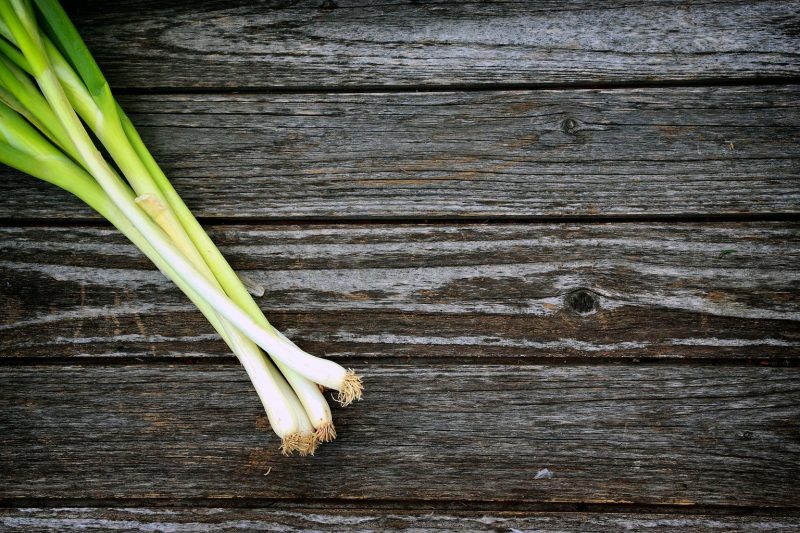
Among the pests, the aphid, the mosaic carrier, and the onion fly, pose the greatest danger. Processing late and mid-season onion varieties against harmful insects can be carried out by insecticides. However, for early varieties, in order to exclude the possibility of a pesticidal residue in onions on the table, it is better to resort to the use of folk remedies. Good results are demonstrated by tobacco infusion, prepared from 20 g of liquid soap, 200 g of tobacco and 10 l of water by infusing the solution for about 2 hours. The fly will help scare away pollination of soil and plants with ground pepper, which will require up to 10 g per 1 m2.
Attention! Regardless of the chosen folk method of pest control, the soil after the procedure must be loosened.
Harvesting and proper storage of leeks
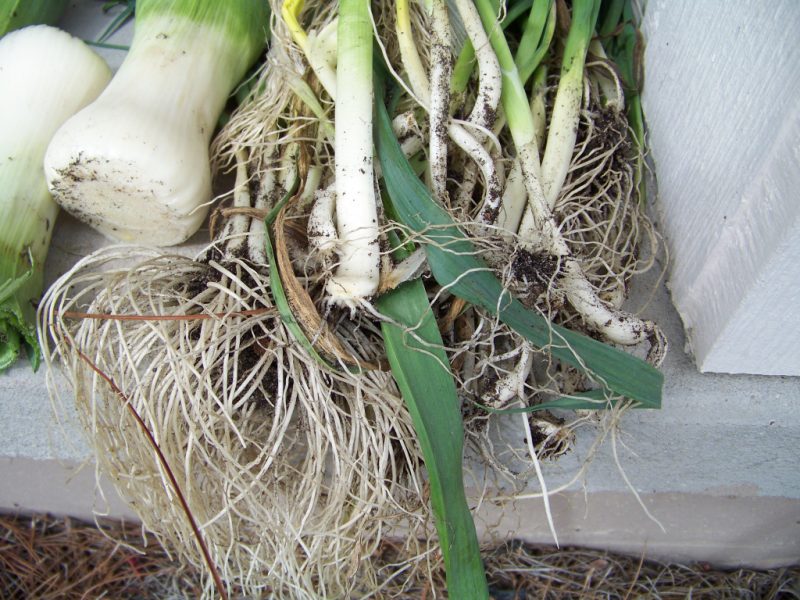
It is necessary to start leek cleaning on a dry day before the air temperature drops below -5 ° C:
- The leek is dug out with a shovel and left on the bed for drying.
- Then the onion is cleaned of soil residues so that it does not fall between the leaf plates.
- The roots are slightly shortened.
- Harvested for storage with foliage.
Depending on the living conditions of the gardener, there are several storage options:
- In the cellar - a 5 cm layer of sand is poured into the box, on which the stems are vertically mounted and sprinkled with the same sand. The shelf life with this method is 5-6 months.
- On the balcony - in a city apartment, a box with sand and stems can be installed on the balcony and well covered, which will extend its shelf life up to 5 months.
- In the freezer - for this method, only high-quality plants are used, in which the roots and leaves are cut. The stems are cooled at 0 ° C and laid out in pieces of 7 each in plastic bags, after which they are sent for storage at a temperature of -5 ° C for up to 5 months.
So, leek, which is more productive than its onion relative, and a more delicious vegetable, is very easy to grow if you study the agricultural techniques of growing the culture in advance.


